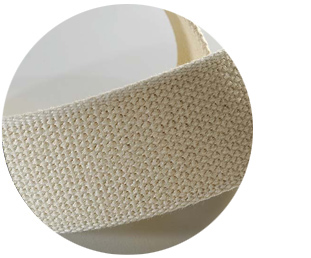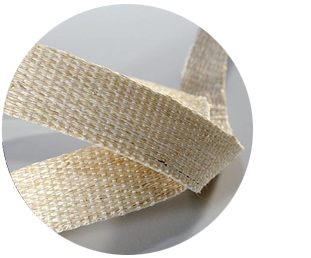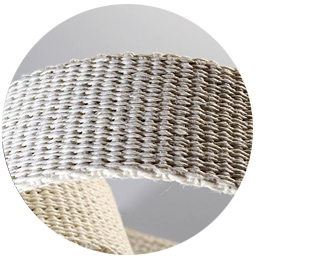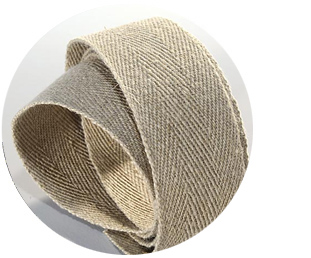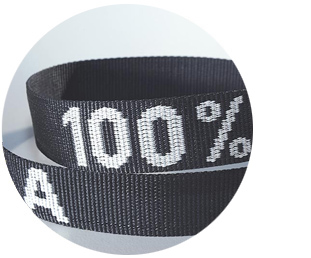More and more industrial nations are becoming aware that we have arrived at a turning point and that the exploitation of fossil fuels will come to an end. The peak of oil production worldwide has already been crossed and it is obvious that we need to find alternatives. Güth & Wolf is looking for such alternatives and has therefore decided to develop tapes and webbings which can be produced from renewable fibres and which give the customer the possibility to use alternative products instead of the oil synthetics commonly used up to now.
It is our target to offer a wide choice of tapes and webbings made from renewable raw materials and to show their substitute functions. We are out to demonstrate the importance and the manifold possibilities these regenerative materials can have for the world of textiles.
Cotton
Fruit fibre
Cotton fibres are growing at the seeds of the cotton plant (mellow species). Within the group of plant fibres cotton-spun yarn is the one that obtains the highest elongation value at medium strength. It is much more elastic and more crease-proof than linen. Furthermore, cotton is a good moisture absorber and, due to its swelling capacity, it has higher wet and dry strength values. Weak acids won’t destroy the fibre but strong acids will. Lyes are even used for refinement (mercerisation). Cotton is used for the production of outer and underwear, table and bed linen, towels and handkerchiefs.
Jute
Bast fibre
Jute fibres are gained from the stem of the jute plant. Jute products quickly lose strength if exposed to light, heat and moisture. Especially warm humidity will accelerate rotting. Jute yarns are used for coarse packaging cloth, cheap rope products, webbings, rugs and bottom fabrics for linoleum and carpets.
Manila hemp
Leaf fibre
Manila fibre is gained from the false stem of a banana species (musa textilis) which does not produce fruits. This hard and strong fibre is extremely resistant to wetness. Manila is used for the production of raw rope yarn, nets, mats and packaging material and for first-rate rigging.
Hemp
Bast fibre
Hemp fibres are gained from the stem of the hemp plant (cannabis sativa). Properties of hemp yarn: High stability and extreme wet strength (130 % of dry strength), good moisture absorption (35 %).
Hemp is mainly used for technical products, e.g. strings, cords, ropes, rigs for ships and boats, heavy cloth.
Linen
Bast fibre
Flax fibres are gained from the stem of the flax plant. Linen yarn is spun from these fibres. Due to the length of its fibres flax is much stronger than cotton or jute. Properties: Smooth yarn surface, low elongation, high absorbing and soaking capacity. Linen yarns are used for the production of high-quality table and bed linen, towels and drying-up cloth as well as for clothing fabric. Linen was used for classical technical applications such as sail cloth, mattress ticking and tarpaulin made of extra-strong twine.
PLA
Polylactic acids
Apart from classic fibres like Manila hemp, flax (linen), hemp, jute and cotton, we focus on polylactic acid for our new product developments. In cooperation with a research institute we have developed a filament which offers an improved abrasion-fastness and which is spun-dyed in addition.
